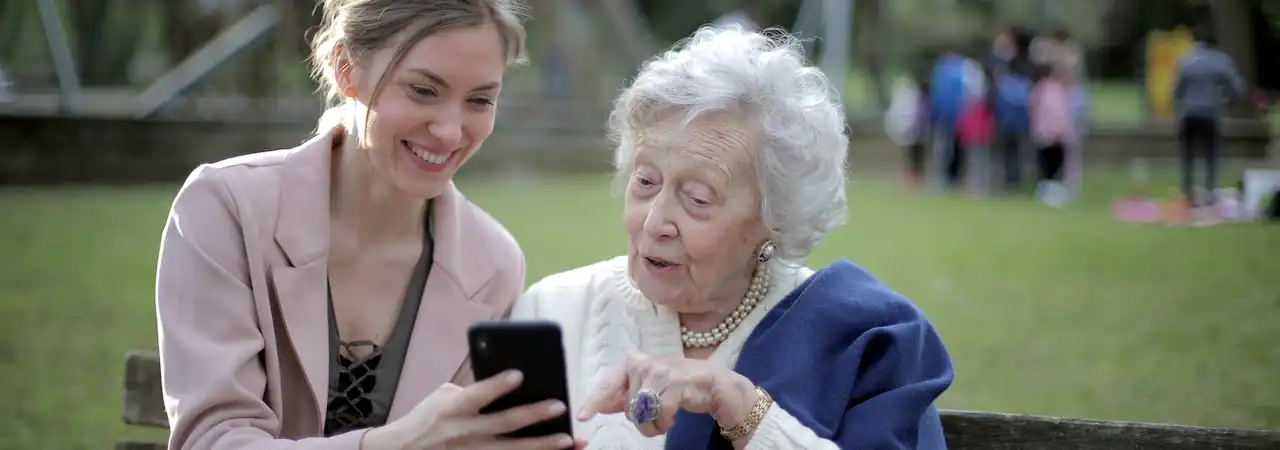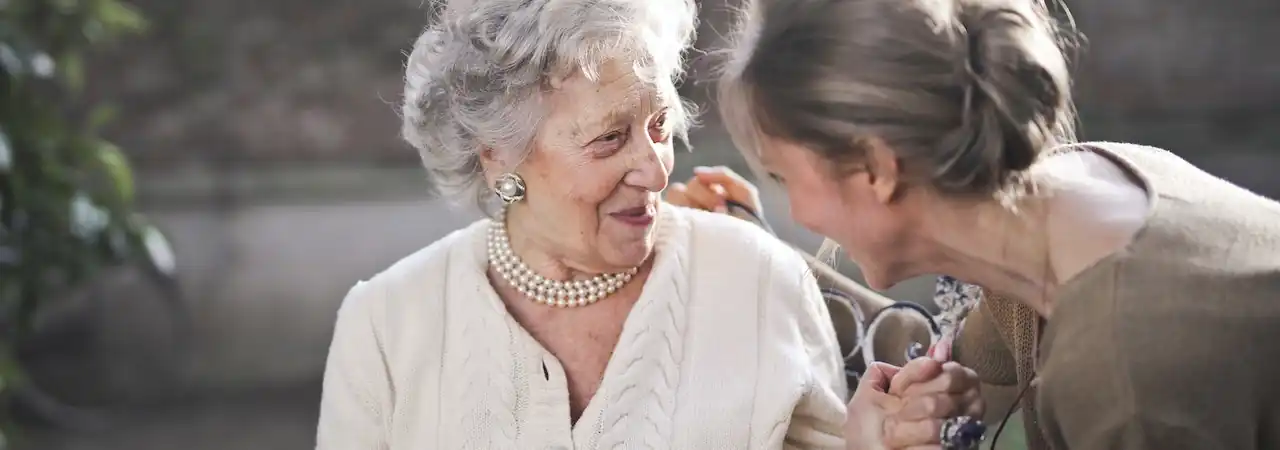Reminiscence Therapy: A Powerful Tool for Improving the Lives of Older Adults
Welcome to La Gratitude’s blog, where we discuss various topics related to the well-being and care of older adults. In previous posts, we explored the benefits and considerations of independent living for seniors and the benefits of intergenerational programs. Today, we’ll be discussing another important topic that can have a significant impact on the lives of older adults – reminiscence therapy.
Reminiscence therapy involves focusing on past experiences and memories to improve cognitive function, emotional well-being, and social connection. In this post, we’ll define reminiscence therapy and explain how it works, discuss the benefits it can provide, explore research studies that support its effectiveness, and provide tips for incorporating it into daily life.
We’ll also discuss how reminiscence therapy can be tailored to individuals with dementia or other cognitive impairments and share personal anecdotes and case studies that demonstrate its positive impact.
At La Gratitude, we are committed to providing support and care for older adults, and we appreciate your support in reading and engaging with our social and online activities. Whether it’s a like on Facebook or a follow on LinkedIn or Twitter, your support means a lot to us. So, thank you for reading, and let’s dive into the power of reminiscence therapy.

What is Reminiscence Therapy?
Definition
Reminiscence therapy is a type of therapy that encourages individuals to recall and share memories from their past. It is often used with older adults as a way to improve cognitive function, emotional well-being, and social connection.
The therapy can be done in individual or group settings and may use a variety of methods to help trigger memories, including photos, music, or other sensory stimuli.
How it Works
Reminiscence therapy is based on the belief that reminiscing about past experiences can have a positive impact on an individual’s mental and emotional health. By recalling and sharing memories, older adults can gain a sense of purpose and meaning, feel more connected to others, and even improve their mood and overall well-being.
During therapy sessions, participants may be asked to share stories or memories related to a particular theme or time period, such as childhood or early adulthood. The therapist may use prompts or cues to help trigger memories, such as asking about a favourite childhood pet or a memorable vacation.
Reminiscence therapy can also be done on an individual basis, with a therapist or family member helping to facilitate the process. In this case, the focus may be more on creating a record of the individual’s life story, through written or recorded materials.
Overall, reminiscence therapy is a powerful tool for older adults to connect with their past and improve their emotional and mental well-being.

The Benefits of Reminiscence Therapy
Improved Cognitive Function
Research has shown that reminiscence therapy can have a positive impact on cognitive function in older adults. By recalling memories and engaging in stimulating conversations, participants can improve their ability to recall information, pay attention, and think critically. This can be especially beneficial for individuals with dementia or other cognitive impairments.
Emotional Well-being
Reminiscence therapy can also have a powerful impact on emotional well-being. By recalling positive memories and reflecting on past achievements, individuals can gain a sense of purpose and meaning in their lives.
This can help combat feelings of loneliness, depression, and anxiety that are common among older adults.
Social Connection
Another benefit of reminiscence therapy is that it can foster social connection and a sense of community. By sharing stories and memories with others, individuals can build deeper relationships and feel more connected to those around them. This can be especially important for older adults who may be isolated or living alone.
Other Benefits
In addition to these main benefits, reminiscence therapy has also been shown to have other positive effects, such as improving sleep quality, reducing stress levels, and even lowering blood pressure. Overall, reminiscence therapy is a holistic approach to improving the well-being of older adults.

Research Studies that Support the Effectiveness of Reminiscence Therapy
Study 1: A Randomized Controlled Trial of Reminiscence Therapy
A study published in the Journal of Gerontology found that older adults who participated in group reminiscence therapy had significant improvements in cognitive function, emotional well-being, and social engagement compared to those in the control group.
The researchers concluded that reminiscence therapy could be an effective intervention for improving the overall well-being of older adults.
Study 2: The Effects of Reminiscence Therapy on Depression in Older Adults
Another study published in the Journal of Clinical Nursing found that individual reminiscence therapy sessions were effective in reducing symptoms of depression in older adults.
The researchers noted that the therapy was particularly effective when tailored to the individual’s interests and experiences.
Study 3: Reminiscence Therapy for Dementia Patients
A third study, published in the International Journal of Geriatric Psychiatry, found that reminiscence therapy was effective in improving mood and reducing behavioural symptoms in dementia patients.
The researchers noted that the therapy was most effective when done in a group setting and tailored to the individual’s cognitive abilities.
Overall, these studies and others like them provide strong evidence that reminiscence therapy can be an effective intervention for improving cognitive function, emotional well-being, and social connection in older adults.

Different Approaches to Reminiscence Therapy
Group Sessions
Group reminiscence therapy involves a trained facilitator leading a group of individuals through a series of guided discussions about their memories and life experiences.
This approach can be particularly effective for improving social connection and reducing feelings of isolation in older adults. Group sessions can also help participants gain new perspectives on their own experiences by hearing stories and memories from others.
Storytelling
Storytelling involves encouraging individuals to tell and share their own stories with others. This approach can be done in a group setting or individually and can be particularly effective for individuals who may not feel comfortable sharing their experiences in a larger group.
Storytelling can be an effective way to build confidence, self-esteem, and a sense of personal identity in older adults.
Multimedia Tools
Using multimedia tools, such as photographs, videos, or music, can also be an effective way to engage individuals in reminiscence therapy.
These tools can help trigger memories and emotions and can be particularly effective for individuals with dementia or other cognitive impairments. The use of multimedia can also help make reminiscence therapy more interactive and engaging for participants.
Other Approaches
Other approaches to reminiscence therapy include art therapy, music therapy, and life review. Each of these approaches involves different techniques and methods for encouraging individuals to recall memories and reflect on their experiences.
Overall, the goal of any approach to reminiscence therapy is to engage individuals in meaningful conversations and activities that promote cognitive function, emotional well-being, and social connection.

Tips for Incorporating Reminiscence Therapy into Daily Life
Journaling
Encouraging individuals to keep a journal can be an effective way to promote reminiscence therapy. Journaling can help individuals reflect on their experiences and emotions, and can be done at their own pace and in their own time.
A journal can be a record of important life events, a place to explore emotions and thoughts, and a tool for personal growth.
Creating Scrapbooks
Creating a scrapbook can be another effective way to incorporate reminiscence therapy into daily life.
A scrapbook can include photographs, letters, and other memorabilia that document important events and experiences in an individual’s life. This approach can be particularly effective for individuals who enjoy visual reminders of their memories and experiences.
Using Technology to Connect with Loved Ones
Technology can be a useful tool for promoting reminiscence therapy, particularly for individuals who may have difficulty travelling or connecting with loved ones in person.
Video calls, social media, and other digital tools can be used to share memories and stories with others. Technology can also be used to access resources, such as online archives or databases of historical events, that can help trigger memories and spark conversation.
Other Tips
Other tips for incorporating reminiscence therapy into daily life include listening to music from different periods, visiting places that hold personal significance, and participating in community events that celebrate cultural or historical events.
Ultimately, the goal is to find activities that promote reflection, engagement, and meaningful conversation about life experiences and memories.

Tailoring Reminiscence Therapy to Individuals with Dementia or Other Cognitive Impairments
Using Sensory Cues
Individuals with dementia or other cognitive impairments may benefit from reminiscence therapy that incorporates sensory cues. These cues can include familiar scents, textures, and sounds that evoke memories and emotions.
For example, playing music from a person’s youth or providing a familiar scent, such as lavender or vanilla, can help trigger memories and promote engagement.
Using Visual Aids
Visual aids, such as photographs or videos, can also be helpful for individuals with dementia or cognitive impairments. Visual aids can be used to prompt conversation, evoke memories, and promote engagement.
Photographs can be particularly effective for individuals who have difficulty communicating verbally or remembering specific events.
Using Short-Term Memory
Individuals with dementia or other cognitive impairments may have difficulty remembering long-term events or experiences but may have better success recalling recent events or short-term memories.
Reminiscence therapy can be tailored to focus on short-term memories, such as recent events or experiences, to promote engagement and connection.
Using Personal History
Individuals with dementia or cognitive impairments may also benefit from reminiscence therapy that focuses on their personal history.
This can include activities that encourage individuals to talk about their childhood, family, and personal experiences.
Focusing on personal history can help individuals with dementia or cognitive impairments feel valued and validated, and can promote a sense of self-worth and identity.

Personal Anecdotes and Case Studies Demonstrating the Positive Impact of Reminiscence Therapy
Case Study 1: John’s Improved Mood and Engagement
John, a 72-year-old man with dementia, had become increasingly withdrawn and unresponsive. His caregivers at a memory care facility decided to try reminiscence therapy, using visual aids such as photographs and memorabilia from John’s life.
After a few sessions, John began to show signs of improvement. He became more engaged during the sessions, started to initiate conversations with his caregivers, and even began to smile and laugh more frequently.
Case Study 2: Sarah’s Improved Cognitive Function
Sarah, an 80-year-old woman with Alzheimer’s disease, had been experiencing a decline in her cognitive function, including memory loss and difficulty with daily activities.
Her daughter started incorporating reminiscence therapy into their daily routine, including looking at family photo albums and talking about old family stories.
After a few weeks, Sarah began to show improvements in her memory and cognitive function. She was able to recall more details from her past and was able to perform daily activities with more ease.
Personal Anecdote 1: James’ Renewed Interest in Life
James, an 85-year-old man living in a nursing home, had become increasingly isolated and disengaged.
His son started visiting him regularly and would bring old family photos and mementoes to talk about during their visits.
Over time, James became more interested and engaged during the visits. He started to initiate conversations and even started asking his son about current events and news, showing a renewed interest in life.
Personal Anecdote 2: Mary’s Sense of Belonging
Mary, an 88-year-old woman living in an assisted living facility, had been feeling lonely and disconnected.
Her caregivers started incorporating reminiscence therapy into their daily activities, including group sessions where residents would share stories and memories from their past.
Mary started to feel a sense of belonging and connection with the other residents. She would look forward to the group sessions and felt more engaged and happy overall.

Reminiscence Therapy: A Powerful Tool for Improving the Lives of Older Adults
Reminiscence therapy is a powerful tool for improving the lives of older adults. By focusing on past experiences and memories, this therapy can provide numerous benefits, including improved cognitive function, emotional well-being, and social connection.
Research studies have demonstrated the effectiveness of reminiscence therapy, and there are many different approaches to implementing it, including group sessions, storytelling, and multimedia tools.
Additionally, reminiscence therapy can be tailored to individuals with dementia or other cognitive impairments.
Incorporating reminiscence therapy into daily life can be as simple as journaling, creating scrapbooks, or using technology to connect with loved ones. Personal anecdotes and case studies demonstrate the positive impact that reminiscence therapy can have on older adults, including improved mood, engagement, cognitive function, and sense of belonging.
Overall, reminiscence therapy is an effective and valuable tool for improving the lives of older adults. Whether it’s in a group setting or incorporated into daily life, reminiscence therapy can help older adults feel more connected, engaged, and happy.
So, consider incorporating reminiscence therapy into your own life or that of your loved one to experience the many benefits it has to offer.
You can make a difference
With your assistance, the volunteers at La Gratitude will be able to take better care of not only the residents at the old age home but also the greater Newcastle community. La Gratitude is constantly involved in outreach projects to help the elderly in need in and around Newcastle.
Your donations will be greatly beneficial in the provision of food and other basic necessities for the less fortunate elderly people that require assistance.
Donating is easy, click here to donate now.




